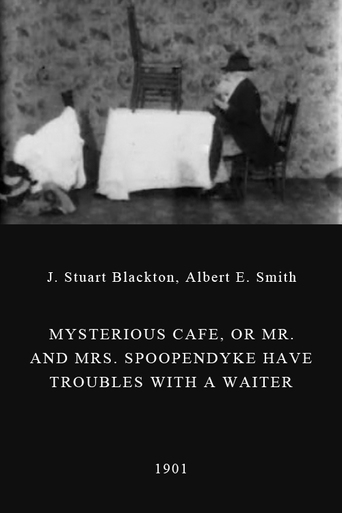kekseksa
This, as other reviewers have pointed out, was one of many filmed that Edison turned out at this time that are simply attempts to copy the work of the French Méliès, who was now gaining an international reputation that would be consolidated by the ground-breaking 1902 film La Voyage sur la Lune, which would be shamelessly duped and shown in the US in 1903.The Canadian reviewer, although perversely he sees it as a reason to praise the films, has absolutely hit the nail on the head when he points out that it is a "fantasy genre" but that the treatment is formally "realistic". And this is exactly why it doesn't work where Méliès' films do. Quite apart from the technical ineptitude with which it is made.The reason this is interesting to observe is that formal realism would become in time an absolute rule of US film-making and one of its greatest limitations. That stylistic straitjacket was not yet entirely in place but one can already see the divergence between the two traditions of film-making. Since the devotion to formal realism was paralleled by an almost equal distaste for "truth", I have somewhere characterised these two traditions(a bit fancifully perhaps)as "Truth perceived within a dream" (European tradition) as opposed to "dream purporting to be truth" (US tradition).Poor Edwin Porter sometimes gets the blame for these miserable films but he had only just been employed by Edison at this time and there's no very solid reason for believing he was involved with them. This particular film was in any case made by Blackton and Smith at Vitagraph but obligatorily marketed via Edison.
Michael_Elliott
The Mysterious Cafe (1901)*** (out of 4) This here is one of many films from Edison that were trying to rip-off the work of Georges Melies but this one here at least manages to be entertaining. An elderly man and his wife enter a restaurant where things go terribly wrong as various items begin to disappear as they try to use them. This includes their chairs and of course the table. If you've seen the work of Melies then you're not going to be blown away by anything here but the film is certainly worth watching. It manages to be quite funny and especially the first trick shot where the woman goes to sit down only to have her chair disappear. Things turn pretty wicked during the final act when the man and woman grow so tired of what's happening that they decide to beat the heck out of the waiter for no apparent reason. This isn't just a couple slapstick punches as they really beat him, kick him and just do whatever they can to beat this poor guy.
MartinHafer
In the late 1890s and up to almost WWI, the Frenchman, Georges Méliès, made a huge number of wonderful short films that were significantly better than his competition. Instead of the usual dull 30 seconds to a minute and a half of static filming of mundane subjects (such as the work done by the Lumiere brothers or Edison), his films abounded with great camera trickery and wild stories. This was probably inspired by the fact he was a magician and then a film maker. His work was so popular that soon other film makers copied his films. Some made broad copies in the style of Méliès whereas others copied the films nearly exactly--never crediting the source--though they were invariably inferior films.In this film, a couple go to a sparsely decorated restaurant. Through the use of stop-motion, things appear and disappear again and again, though the action isn't very seamless for this style of film--with many of the scenes appearing jumpy because the actors did not stay in quite their original poses when the camera was re-started. Oddly, the film ended on a very cruel note, as the couple then appeared to beat the waiter to death or at least try to.Because the stop-motion wasn't executed very well and because the subject had been done before (even by the same Edison Company), this one merits a 5.
Cristiano-A
This is a trick film, directed by Edwin Porter for the Edison Company. It follows the pioneering work of French filmmaker Georges Méliès, who developed special camera effects to achieve magical results. These effects included stop motion, dissolves, and multiple exposures. The novelty of motion pictures in the early days made these effects extraordinarily entertaining. But this movie is miles away from the ones directed by Meliès. It is not funny, the tricks are bad and the people who saw it and liked it, in the beginning of the 20th century, never had the chance of seeing a film by the Great Magician Georges Méliès.
